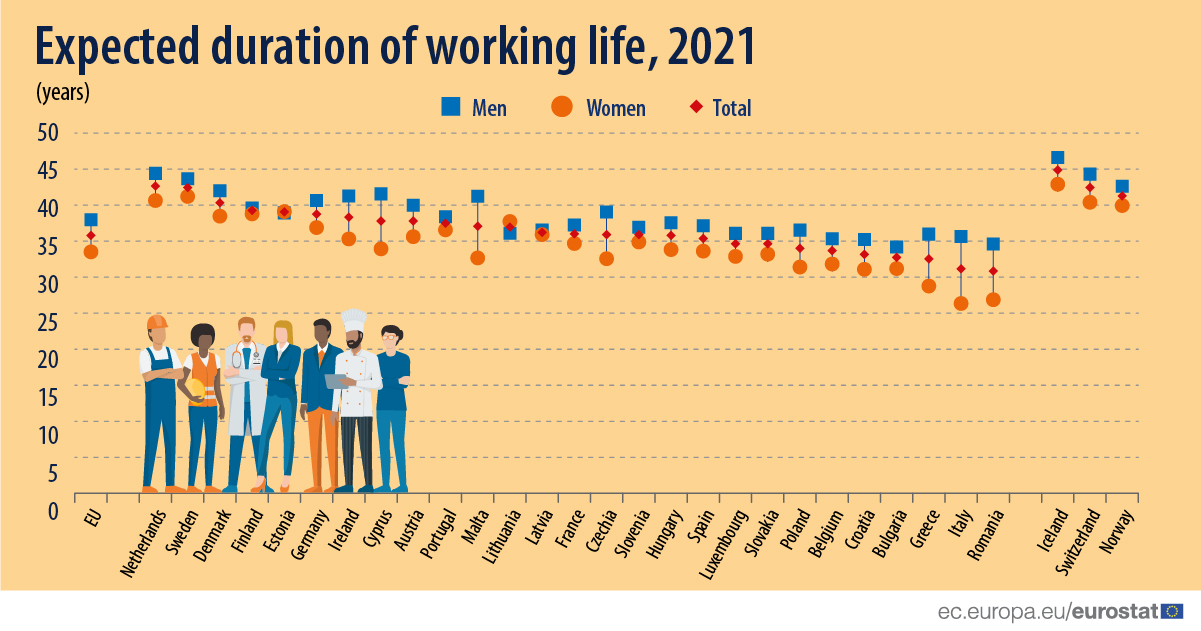In 2021, the expected average duration of working life for 15-year-olds in the EU was 36.0 years. Since 2001, the expected average duration of working life steadily increased in the EU, then declined for the first time in 2020 with regard to the COVID-19 health crisis (from 32.0 years in 2001 to 35.9 years in 2019, then down to 35.6 years in 2020) to come back in 2021 to its pre-pandemic level.
Source dataset: lfsi_dwl_a
Among the EU Member States, the expected average duration of working life varied broadly depending on the countries and their geographical situation in Europe. In 2021, the highest durations in the EU were recorded in the Netherlands (42.5 years), Sweden (42.3 years) and Denmark (40.3 years). By contrast, the lowest durations of working life were recorded in Romania (31.3 years), Italy (31.6 years) and Greece (32.9 years).
For men, the expected duration of working life was on average 38.2 years in the EU, with the longest durations recorded in the Netherlands (44.3 years) and Sweden (43.6 years), and the shortest in Bulgaria (34.6 years) and Romania (35.0 years). For women, the average duration of working life in the EU was 33.7 years, with the longest durations also recorded in Sweden (41.0 years) and the Netherlands (40.5 years), but the shortest in Italy (26.9 years) and Romania (27.4 years).
Although men are expected to work longer than women, the gender gap has reduced in the EU with the growing participation of women in the labour market (the gender gap was +4.5 years in 2021 compared with +7.0 years in 2001). In 2021, this gender gap was most pronounced in Italy (+9.1 years), followed by Malta (+8.4 years) and Romania (+7.6 years). Lithuania was the only EU Member State where the gender gap was negative, with women usually working 1.3 years more than men, while Estonia (+0.1 years), Latvia (+0.8 years) and Finland (+1.1 years) had very small gender gaps.
For more information:
- Statistics Explained article on duration of working life
- Dedicated section on labour force statistics
- Database on labour force statistics
- Dedicated section on gender statistics
Methodological notes:
- The indicator ‘expected average duration of working life’ measures the expected number of years that a person, at the current age of 15 years, is expected to remain in the labour force throughout their life. It is estimated using the life expectancy and the share of employed and unemployed people in the population for each age.
To contact us, please visit our User Support page.
For press queries, please contact our Media Support.


